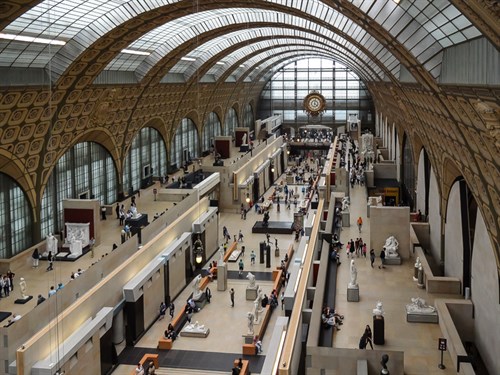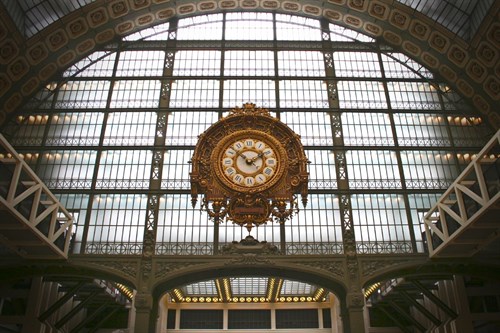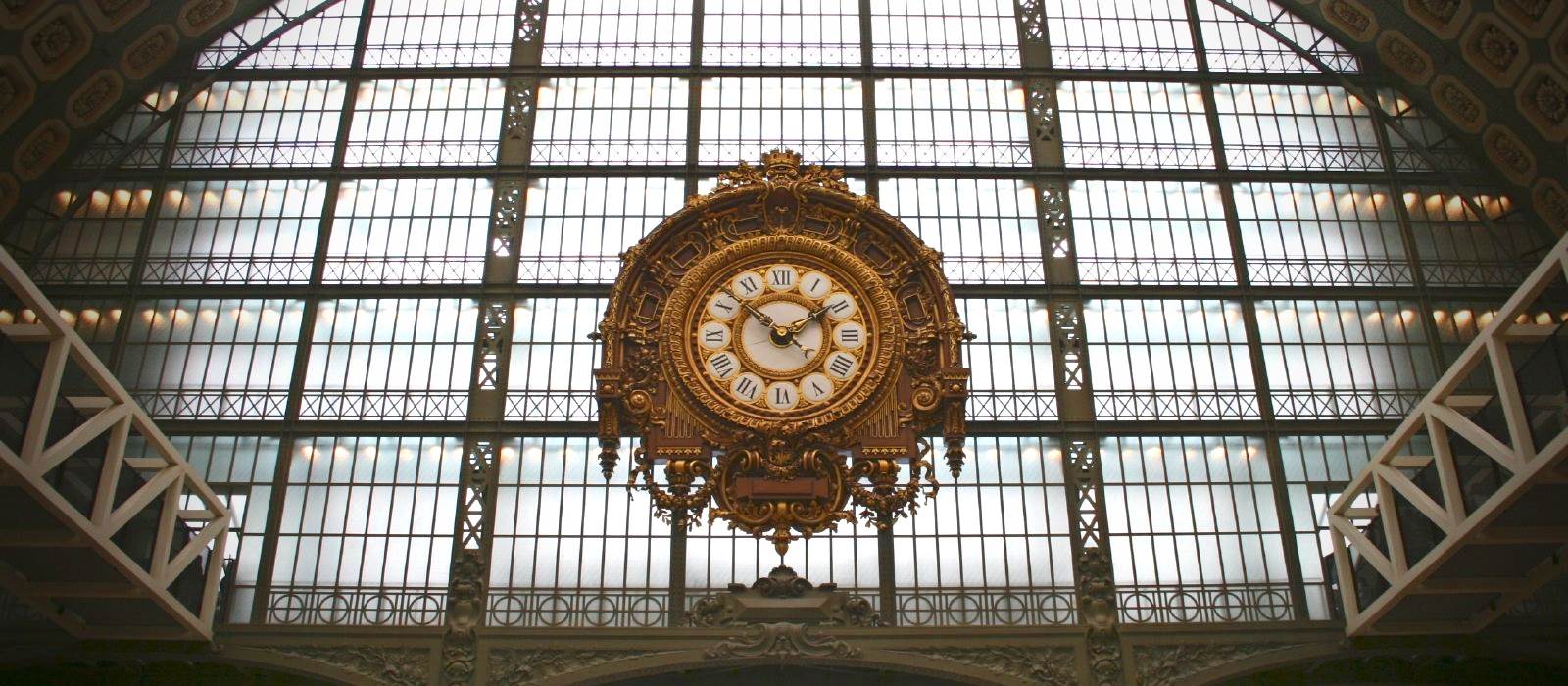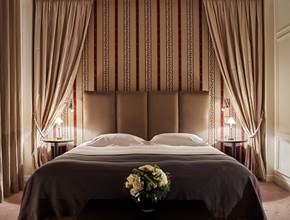
The Musée d'Orsay in Paris
Explore Great French Paintings, Sculptures and Photography
Paris has forever been a vibrant centre for the arts, with no fewer than 1,000 galleries and museums residing within the cities limits. One such artistic hub is the Musée d'Orsay – the second most visited museum in Paris – situated on the famous Left Bank of the Seine, within an ornate railway station from the turn of the 20th century; which itself can be deemed a veritable work of art. However, once inside the impressive building, you have the opportunity to acquaint yourself with the most important assemblage of Impressionist and Postimpressionist art in the world; as well as a cultivated collection of work from the realms of sculpture, design and photography.
With a primary focus on the prosperous period of art history between 1848 and 1914; French artists make up the bulk of the exhibited works – featuring masterpieces from the likes of Monet, Manet, Renoir, Cézanne and Gaugin; who are joined by a number of chefs-d'oeuvre by Vincent van Gogh.
The Rise (and Nearly Fall) of the Historic Building
In 1898, Victor Laloux was entrusted to design a luxury railway station that would blend in with the already existing buildings in the centre of Paris. The end product was the grandiose La Gare d’Orsay. However, before long the station was deemed surplus to requirements; with the platform too short for the increasing length of the evolving electric trains. Uncertainty about the future of La Gare d’Orsay followed, and in 1973 it looked as if an ultramodern hotel would be built in place of the disused railway station. Fortunately, the building was considered too historically significant to be torn down, and in 1978 the project to transform the space into a museum began.
The basis of Laloux’s designs; featuring the iconic arched glass roof, the rows of ornate windows and the traditional décor – namely the baroque style clock – laid down the foundations for what would become the Musée d'Orsay. And after significant renovation; the former railway station was turned into an exquisite modern exhibition space, swamped with natural light; while still maintaining the essence of the Belle Époque period.

The Monumental Collections of Musée d'Orsay
As you enter the Musée d'Orsay, you are instantly greeted by a number of 19th century statues that align the central alleys of the ground floor. But the bulk of discovery on this level awaits in the adjacent rooms, which are filled with works largely predating the rise of Impressionism. The most notable canvases include Realist oils by Courbet and Degas and paintings from the Academicism, Symbolism and Neoclassicism movements.
Historic photographs also feature throughout the ground floor; largely depicting images of animals from the earliest stages of photography. The Pavillon Amont is where you can see the displays of design through the ages; namely through the hundreds of examples of ornate furniture, that have been tellingly crafted with agonising attention to detail.
The temporary exhibition space also resides downstairs; and with an ever-changing array of carefully curated expositions throughout the year, it is definitely worth dedicating some of your time to see what artworks await. Click here to see what exhibitions are currently on display.
The Home of the Impressionists
The fifth floor is dedicated to the Impressionists; where you can appreciate the alluring landscapes of Pissarro, Monet’s masterful depictions of light, Cezanne’s iconic Cardplayers, Manet’s ‘shocking’ Olympia and Renoir’s many portrayals of feminine sensuality. A number of sculptures and paintings by Degas also reside on the fifth floor; himself an innovator within the Impressionist movement, though he liked to define himself as a Realist.
This level also discloses two excellent panoramas, where you can look over the entire floor of the museum, or enjoy an unobscured panoply of Paris stretching towards Montmartre and the Basilica of the Sacré-Coeur; although you may find it hard to drag yourself away from the gallery.
The Peers of Postimpressionism
The second floor is where you’ll find the Postimpressionists (minus Cezanne who is largely exhibited on the fifth). An extensive number of works by Pierre Bonnard and Édouard Vuillard, and a selection of paintings from Frédéric Bazille are among the highlights of this level; but the collections by Gauguin and van Gogh are undoubtedly the focal points.
Be sure to dedicate a good proportion of your time to Gauguin’s primitive sculptures and the assemblage of paintings from his travels in Tahiti, namely his Tahitian Women (1891). Van Gogh chefs-d'oeuvre that are not to be missed include The Church at Auvers (1890), a selection of his Self-Portraits and Starry Night Over the Rhône (1888).
A Renewed Viewing Experience
The renovations that were finalised in 2011 have greatly improved the viewing experience on offer in the galleries of the Musée d'Orsay; providing for simplified observations of the paintings on display. The most significant changes include the addition of neutral colours to the walls; with the radiant white that was used before deemed the “enemy of painting” with its masking of the subtle uses of colour; particularly seen in Impressionist and Academic works.
Other renewals include less intrusive display cases – employed to invite dialogue between the artists that are displayed together; and improved lighting – adopted throughout the museum to provide for heightened viewing of the intricacies contained within the canvases (something Monet would approve of).

Initially intended to bridge the gap between the period where the Louvre’s collection of art ends (circa 1848) and the Centre Pompidou’s begins (circa 1914); only at Musée d'Orsay can you gain such an unobscured insight into one of the most critical stages in the development of art.
See the French innovators who changed the face of painting; and admire the extremity of the emotion transferred onto the canvas by van Gogh, with a visit to one of the most prestigious art institutions in the world.


